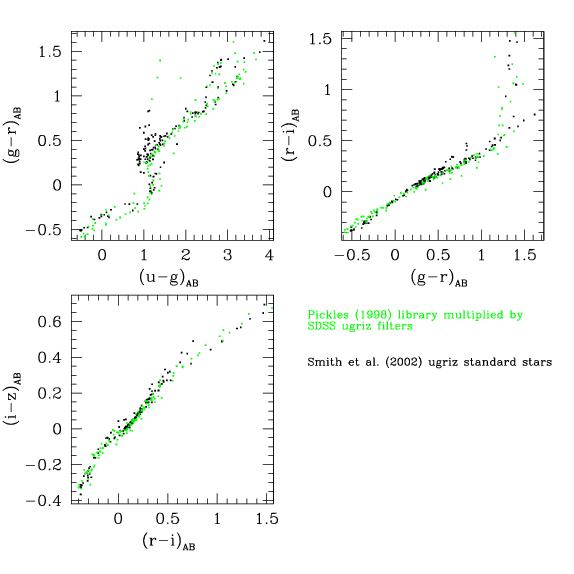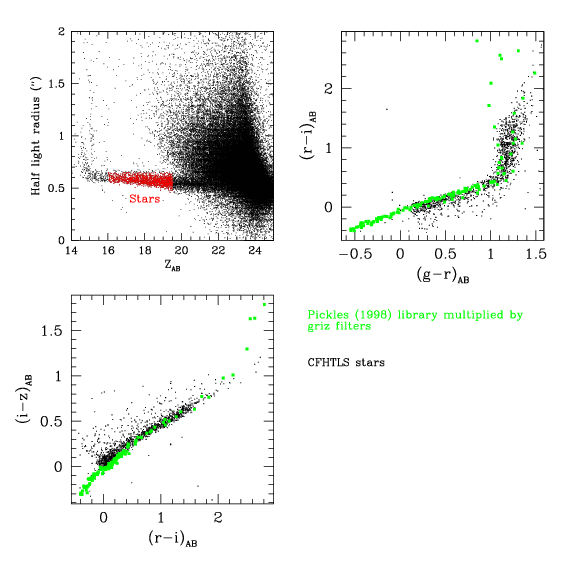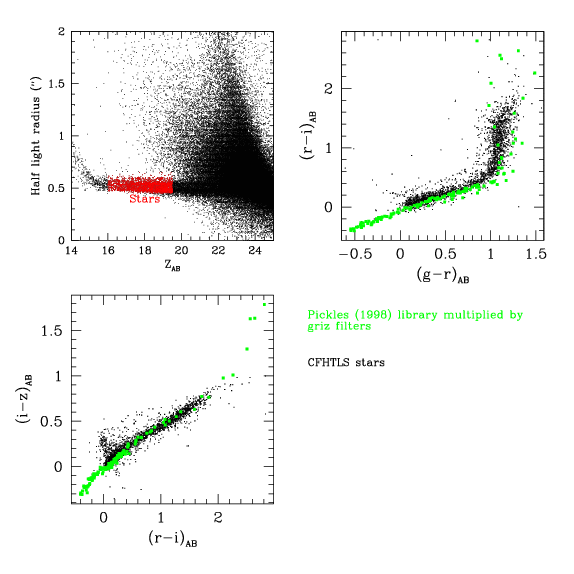 The figures at right show the same colour plots for the
stars in the CFHTLS D3 stacks prepared by Dave Balam.
The stars were identified by plot half-light radius against
magnitude. The stellar locus is easily identified down to z=19
and with some difficulty to z~21. This is shown in the top left panel
where the stars have been highlighted in
red.
Note that these cuts in half-light radius and magnitude are
somewhat conservative.
The figures at right show the same colour plots for the
stars in the CFHTLS D3 stacks prepared by Dave Balam.
The stars were identified by plot half-light radius against
magnitude. The stellar locus is easily identified down to z=19
and with some difficulty to z~21. This is shown in the top left panel
where the stars have been highlighted in
red.
Note that these cuts in half-light radius and magnitude are
somewhat conservative.
The other two plots show the colours of the stars selected in this
manner in black overlaid in
green
with
colours determined by multiplying the Pickles spectra
by the CFHTLS griz filters.
Note that the CFHTLS version of the ugriz filter set is not identical
to the SDSS version, as discussed
here
Overall the colours of the CFHTLS stars seem to agree well
with the predictions, at least to within 0.1 mag.
The only cause for concern is the elbow at (g-r)=1.3 and (r-i)=0.5
where a slight displacement may be occuring.
This indicates that the zeropoints are fairly well understood.
|
 The figures at right show colour-colour plots for
stars in the SDSS ugriz system. The green dots represent
the results of multiplying the Pickles spectra by
the SDSS filter curves obtained from
here
The black dots show the colours of the ugriz standard stars
as given by
Smith et al. 2002 as
retreived from
this web site
The figures at right show colour-colour plots for
stars in the SDSS ugriz system. The green dots represent
the results of multiplying the Pickles spectra by
the SDSS filter curves obtained from
here
The black dots show the colours of the ugriz standard stars
as given by
Smith et al. 2002 as
retreived from
this web site


